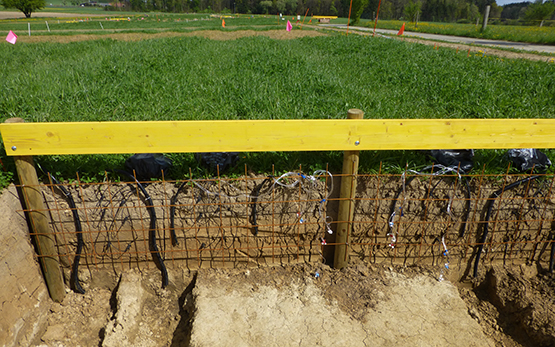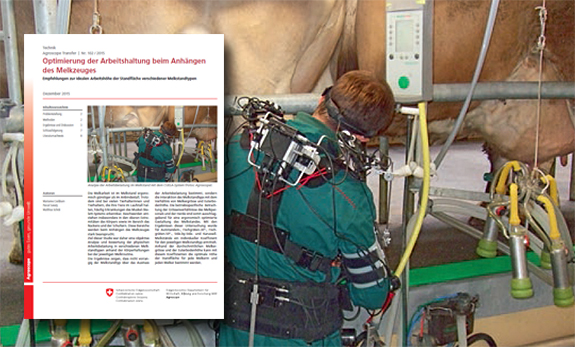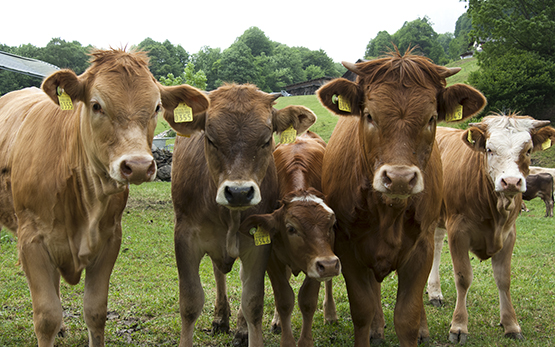Meyer M., Contzen S., Feller M., Pauler C., Probo M., Röösli A., Schmidt R., Schneider M.
Resilience of Swiss summer farms: An interdisciplinary analysis of key challenges and adaptations.
Agricultural Systems, 227, 2025, Article 104365.
Volk M., Heinz M. M., Giger R., Schneider M.
Medium management intensity supports largest topsoil organic carbon stocks in mountain grassland.
Archives of Agronomy and Soil Science, 71, (1), 2025, 1-15.
Mochi L., Lumineau C., Pauler C., Schneider M., Pittarello M., Probo M.
Feeding behavior of heifers and goats on alpine pastures encroached by green alder.
Dans: Agrosilvopastoral Futures: Bridging Tradition with Innovation in Mediterranean and Mountain Pastures. 9 April, Ed. Adnan Menderes University, Kuşadası (TR). 2025, 15-16.
Oriani F., Aasen H., Schneider M.
Different growth response of mountain rangeland habitats to inter-annual weather fluctuations.
Alpine Botany, In Press, 2025.
Fuchs P., Pauler C., Schneider M. K., Umstätter C., Rufener C., Wechsler B., Bruckmaier M. R., Probo M.
Implementation of virtual fencing in heifers for mountain summer grazing.
Journal of Animal Science, 102, (S3), 2024.
Mariotte P., Svensk M., Pittarello M., Nota G., Terranova M., Schneider M., Manzocchi E., Dubois S., Probo M.
Restoring Alnus viridis-encroached pastures using Highland cattle while providing good forage quality and reducing methane emissions.
Dans: International Congress in Ecology and Evolution. 24 October, Ed. SFE2, Lyon (FR). 2024.
Boller B., Kopecký B., Willner E., Schneider M.
Potential des Apenninschwingels und seiner Hybriden als Futterpflanzen für hohe Lagen.
Agrarforschung Schweiz, 15, 2024, 156-167.
Pauler C., Homburger H., Lüscher A., Scherer-Lorenzen M., Schneider M. K.
Ecosystem services in mountain pastures: A complex network of site conditions, climate and management.
Agriculture, Ecosystems & Environment, 377, 2024, 1-14.
Fuchs P., Schneider M. K., Pauler C., Confessore A., Umstätter C., Probo M.
Virtual fencing for managing lactating Holstein Friesian cows and its effect on animal welfare.
Dans: BOLFA & ICFAE. 28-30 August, Ed. University of Bern / EAAP / ASAS, Bern. 2024.
Schneider M. K., Feller M.
Klimawandel: Herausforderungen für die Alpwirtschaft.
Montagna, 6, 2024, 8-9.
Moreno Garcia C. A., Schneider M. K., Pauler C., Svensk M., Zhou H., Hickford J.
Exploring the genetic basis of cattle grazing behaviour for the sustainable use of the Swiss Alps.
Grassland Science in Europe, 29, 2024, 651-653.
Moreno Garcia C. A., Schneider M. K., Pauler C., Svensk M., Zhou H., Hickford J.
Exploring the genetic basis of cattle grazing behaviour for the sustainable use of the Swiss Alps.
Dans: 30th General Meeting of the European Grassland Federation. 9 June, Leeuwarden (NL). 2024, 1.
Pauler C., Lüscher A., Homburger H., Scherer-Lorenzen M., Schneider M. K.
Trade-offs and synergies among ecosystem services in mountain pastures.
Dans: 30th General Meeting of the European Grassland Federation. 9 June, Leeuwarden (NL). 2024, 1.
Pauler C., Lüscher A., Homburger H., Scherer-Lorenzen M., Schneider M. K.
Trade-offs and synergies among ecosystem services in mountain pastures.
Grassland Science in Europe, 29, 2024, 320-322.
Pauler C., Fuchs P., Schneider M. K., Hervault P., Umstätter C., Bruckmaier R. M., Probo M.
Implementation of virtual fencing in mountain conditions.
Dans: 3rd Mountain Livestock Farming Systems Meeting. 5-7 June, Ed. EAAP / VetAgro Sup / INRAE, Clermont-Ferrand (FR). 2024, 62.
Schneider M. K., Pauler C., Oriani F., Probo M.
Using sensors for mountain livestock research and management.
Dans: 3rd Mountain Livestock Farming Systems Meeting. 5-7 June, Ed. EAAP / VetAgro Sup / INRAE, Clermont-Ferrand (FR). 2024, 61.
Tonn B., Schneider M. K., Pauler C., Steiner A., Dittmann M., Leiber F.
Phenolic compounds and forage quality affect methane production potential from Swiss alpine summer pastures.
Dans: 3rd Mountain Livestock Farming Systems Meeting. 5-7 June, Ed. EAAP / VetAgro Sup / INRAE, Clermont-Ferrand (FR). 2024, 59.
Moreno Garcia C. A., Schneider M. K., Pauler C., Svensk M., Zhou H., Hickford J.
Exploring the behavioral genetics of cattle grazing for the sustainable use of the Swiss Alps.
Dans: 3rd Mountain Livestock Farming Systems Meeting. 5-7 June, Ed. EAAP / VetAgro Sup / INRAE, Clermont-Ferrand (FR). 2024, 47.
Acciaro M., Schneider M. K., Decandia M., Giovanetti V., Pauler C.
Daily and seasonal movement patterns of Sarda cows.
Dans: 3rd Mountain Livestock Farming Systems Meeting. 5-7 June, Ed. EAAP / VetAgro Sup / INRAE, Clermont-Ferrand (FR). 2024, 44.
Oetiker José M., Schneider M. K., Reidy B., Pauler C.
Ecosystem services of sheep farming in European mountains.
Dans: 3rd Mountain Livestock Farming Systems Meeting. 5-7 June, Ed. EAAP / VetAgro Sup / INRAE, Clermont-Ferrand (FR). 2024, 37.








